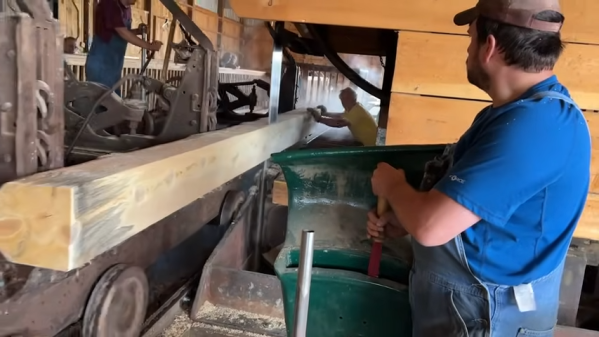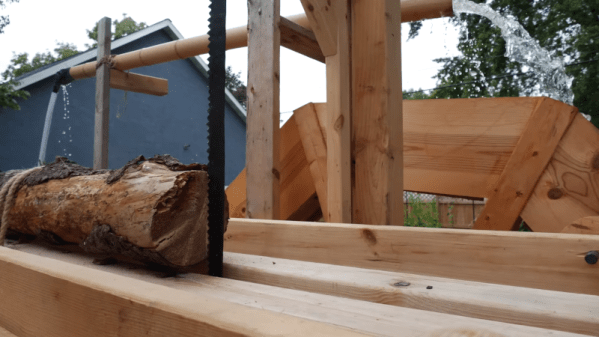[Rural Heritage TV] has video of a private tour of a working, two-story, steam-powered sawmill at Lake Itasca, Minnesota. This is believed to be one of the only working steam-powered band-sawmills in the country with a shotgun (or reciprocating) feed carriage. The carriage moves back and forth with a log while a monstrous 44-foot long bandsaw cuts pieces off on every stroke. There’s even a log turning mechanism, because if there’s one thing that never changes, it’s that time is money.
 There is great footage of the whole thing in action, and also a serious tour of just how much work was needed to keep such a tool running. For example, in its heyday a machine like this would be swapping bands out for maintenance and sharpening every few hours.
There is great footage of the whole thing in action, and also a serious tour of just how much work was needed to keep such a tool running. For example, in its heyday a machine like this would be swapping bands out for maintenance and sharpening every few hours.
Viewers unfamiliar with such machinery may notice the lack of rims or guard rails on the bandsaw and other belts and pulleys. How do bands stay centered on spinning wheels without falling off? The crowned pulley was the steam era’s solution, providing a means for belts to self-center without any need for rims or other additions.
This tour of the sawmill is a nifty peek at a technology that, at one point, ruled the roost. Watch it in action in the video, just under the page break. If that leaves you hungry to know more, there’s a second video that goes into added detail about saw sharpening and more.
One last tip: if you’re hungry to know more about the history of the steam engine, The Perfectionists is absolutely a book you should read because it goes into fascinating detail about that, and more.
Continue reading “Chugging Along: A Steam-Powered Sawmill Still Makes Its Mark”













